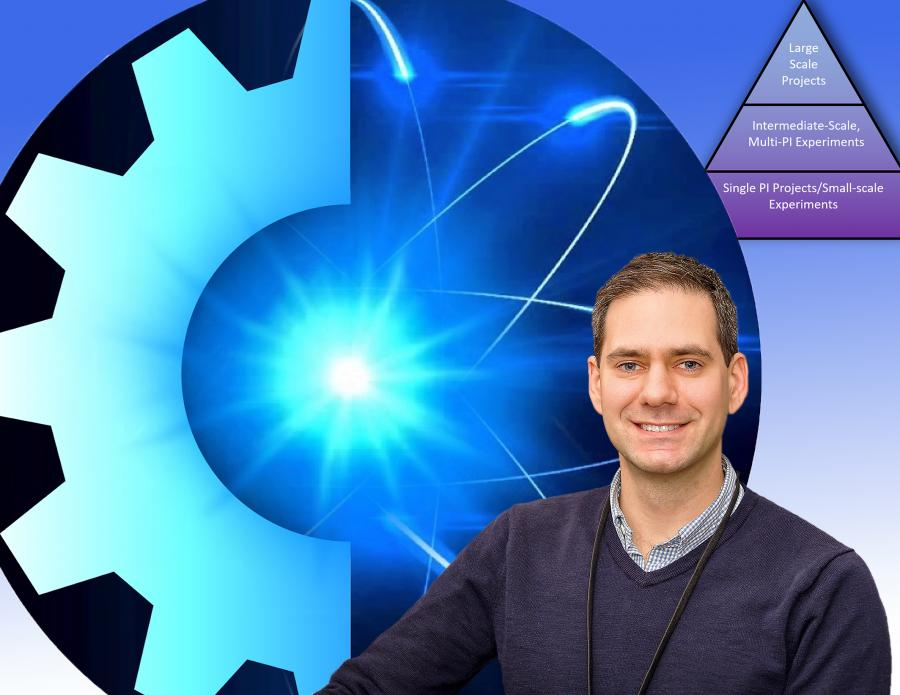Mar 20 2020
One of the main goals of researchers across the world is to create and control fusion energy on Earth. The generation of this clean, safe, and unlimited fusion energy could produce electricity for all people, and this could soon become a reality.
 Physicist Nathan Ferraro with image from the cover of the report behind him. Image Credit: Photo and composite by Elle Starkman/PPPL Office of Communications.
Physicist Nathan Ferraro with image from the cover of the report behind him. Image Credit: Photo and composite by Elle Starkman/PPPL Office of Communications.
The American Physical Society Division of Plasma Physics Community Planning Process has recently released a landmark report that recommends the instantaneous steps that should be taken by the United States to speed up the development of this long-awaited fusion energy.
The landmark report also describes prospects for improving one’s interpretation of plasma physics and shows how that interpretation can be applied to benefit society at large.
The report titled “The Community Plan for Fusion Energy and Discovery Plasma Sciences, “reflects the enthusiasm among the U.S. fusion and plasma physics community to take bold steps to make fusion energy a reality, to expand our understanding of plasma physics, and to use that understanding to benefit society,” stated Nathan Ferraro, a physicist from the U.S. Department of Energy’s (DOE) Princeton Plasma Physics Laboratory (PPPL) and co-chair of the plan put together over a year by the community.
Professional Societies
The report, which runs to 199 pages, was generated using input from scores of U.S. engineers and researchers from several professional societies. It makes many recommendations, including the recommended steps given below:
- In ad-verbatim of the report, in the days to come, studies “should be driven by the mission to enable construction of a fusion pilot plant (FPP) that produces net electricity and thereby establishes the scientific and technological basis for commercial fusion energy.”
- Advancement of this mission must encompass the immediate design of a novel U.S. doughnut-shaped fusion facility, or tokamak, which can manage conditions that are consistent with those encountered by an FPP. Design and construction of a dedicated device should also be started immediately to illustrate the impact of neutrons—discharged by fusion reactions—on the facility housing the reactions.
- Improving concept and modeling capabilities required to interpret and maintain burning plasmas, wherein the plasma is mainly heated by fusion reactions. The United States should also maintain complete membership in ITER—the international experiment being developed in France to show the generation of burning plasma.
- Promoting the studies in plasma science fields, spanning from nanotechnology to astrophysics. Recommended steps include the construction of a general plasma science facility to analyze astrophysically-applicable magnetized plasma phenomena. This would ensure steady funding for a balanced study portfolio and develop networks of facilities and researchers to allow a wide range of frontier scientific research.
Designed to Help Fulfill a Charge
The report has been generated to assist the Fusion Energy Sciences Advisory Committee (FESAC) to meet a DOE charge for the advancement of a long-range plan for the Fusion Energy Sciences program of the DOE Office of Science. The report also calls for association with other governmental agencies and offices, and also with international partners and private industry, to implement the entire suggestions of the strategic plan.
We are encouraged to see that this process brought the community together to recognize the full scope of this challenge, and that coordinated, multi-disciplinary research and development is needed to achieve our goals.
Nathan Ferraro, Physicist, Princeton Plasma Physics Laboratory, U.S. Department of Energy